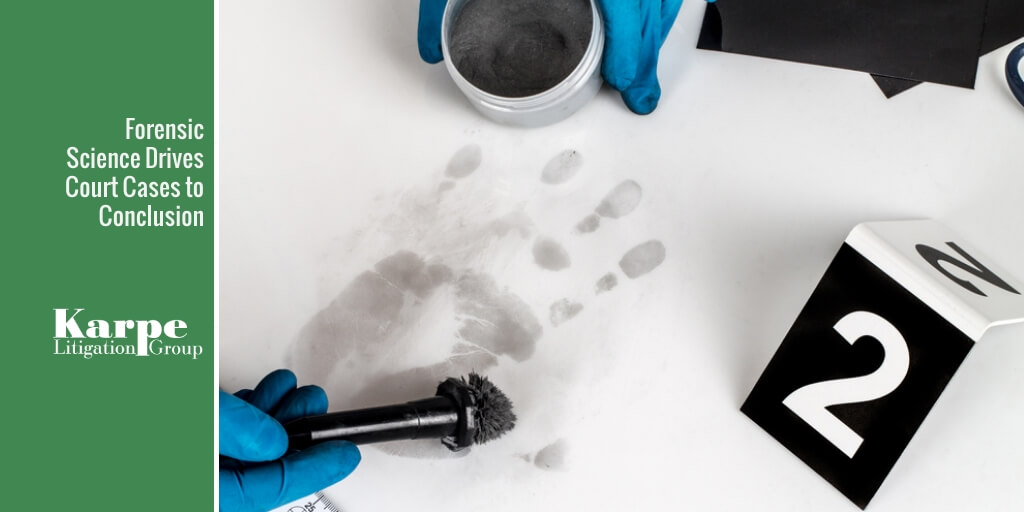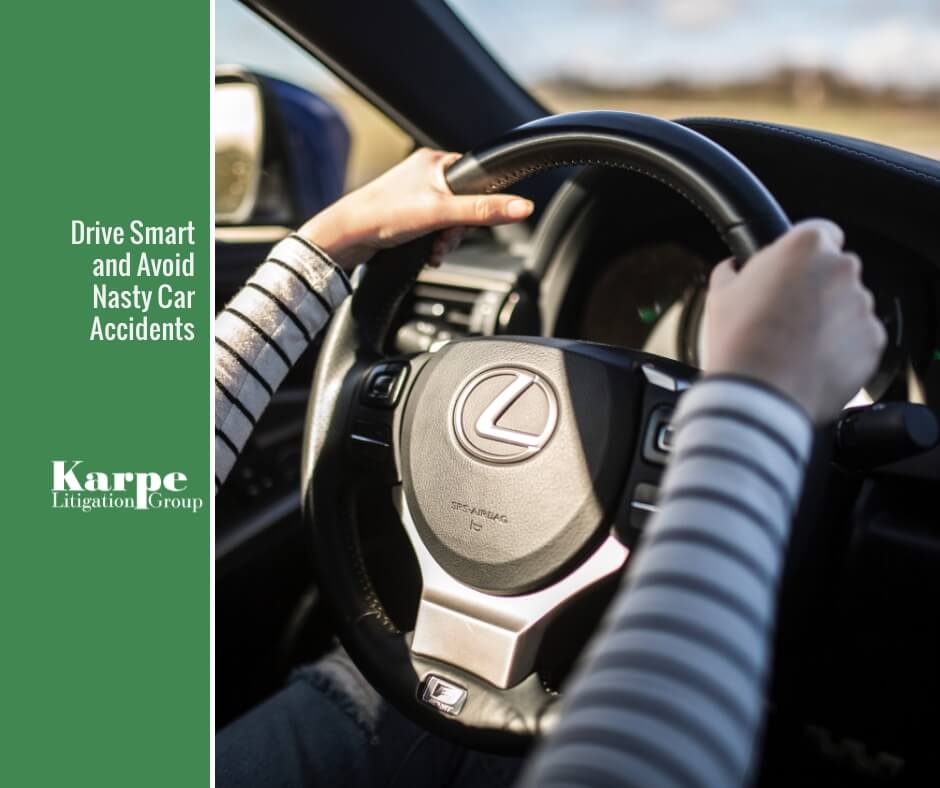Indiana drivers are more distracted than ever, and we’re not alone. Learn defensive driving strategies you can use every time you’re behind the wheel and avoid an accident on the road.

When driving your car on the roads and highways of Indiana, alone or with passengers, driving safety should be your top concern. It’s not only crucial that you know the basics of safe driving, you must practice them every time you’re behind the wheel, if you hope to prevent or avoid an accident like this one that occurred recently on I-70. Distracted driving is at least partly to blame for this multi-vehicle accident involving at least seven cars, semi-trailers and trucks, closing the highway and leaving two people dead.
When it comes to the worst states for distracted driving, Indiana ranks 31, with a distracted driving fatality rate of 1.08. That’s one too many per year for Indiana lawmakers, who are considering a new bill that makes holding a cellphone or any other electronic communications device in your hands while driving illegal. Laws are one way to help drive smart when you’re on the road; safe steps to drive by are another.
10 Safe Driving Behaviors to Stop Preventable Auto Accidents Before They Happen
Defensive Driving – As a defense driver, you assume other drivers might make mistakes. You are on guard in the event that other drivers make errors and watch ahead for advance warning of any hazards on the road. By watching ahead, you have enough time to avoid potential accidents.
You also learn to anticipate hazards by scanning frequently in front of traffic, as well as the side and back around the car, and adjust speed or direction to react safely to any situation. It is recommended that drivers scan ahead to where they will be in 10 to 12 seconds. For highway driving, keep your car positioned far enough from other vehicles to have enough time to successfully avoid them, if they suddenly swerve into your path.
Right of Way - In general, the vehicle that arrives last must give right-of-way to other vehicles. Drivers should give right-of-way when entering traffic, when turning left in front of approaching traffic and when changing lanes. You should only move in your intended path or direction after assuring that you will not conflict with other traffic. Drivers should assume that other drivers will not see you when you maneuver into their path.
When pulling into traffic, proceed slowly, look and listen. Be aware of any blind spots, such as those in rearview mirrors and behind windshield pillars or highway road signs. Vehicles can seemingly appear out of nowhere so caution is the key to yielding the right-of-way.
Start-up and Back-up - When a car has been parked long enough, pedestrians and other vehicles may be resting within a few feet. Starting up forward, backward or to the right or left creates a potentially hazardous situation. Before starting the car, you should walk around the car and look underneath to make sure there is the right clearance.
After checking around your car, it is important to start up quickly before other vehicles or pedestrians approach. Start moving slowly at first to allow any vehicles or pedestrians who may have unexpectedly approached to safely move away.
Negotiating Curves - When negotiating curves at an excessive speed, cars can lose traction and slide off the road. Commercial trailers or other top-heavy vehicles risk rolling over. It is important to reduce speed before entering a curve in order to have enough time to correct direction and maintain control of the vehicle. Keep side wheels off the shoulder of the road. Side wheels may drop or sink in the shoulder, increasing the chances of an accident.
Passing - Safe passing maneuvers require well-developed skills. Drivers must make many critical decisions in a short amount of time. The steps to pass another vehicle successfully include checking sight distance ahead and mirrors for rear traffic and traffic passing you; estimating speed and position of approaching vehicles and the time needed to safely pass; accelerating, steering and checking for traffic entering on side roads. Safe drivers consider all steps quickly to prevent an accident. Safetyinfo.com recommends:
- Before you pass, check to be certain no one is passing you.
- Assume the driver in front of you doesn’t know you are passing. That driver may pull to the left to pass a vehicle in front or make a left turn.
- While you are passing, watch carefully for vehicles that may be entering the roadway from side roads or driveways.
- Assume vehicles approaching from the opposite direction will not see you or slow down for you to complete your passing maneuver.
- Watch out for vehicles passing other vehicles from the opposite direction.
- If the vehicle you are trying to pass speeds up, let it go. Don’t get in to a dangerous race.
- Don’t take risks. If in doubt, don’t pass.
- Signal your intentions to pass.
Crossing Intersections - It is probably not a surprise that a majority of car accidents happen in intersections. Vehicles coming from different directions into an overlapping space creates a reason for safe driving habits to kick in and anticipate a hazardous situation.
Count to three before entering an intersection on a green light. Look both ways to make sure other vehicles are not trying to race through a yellow light. Exercise caution when passing semi-trailers because long trucks have a considerable blind spot on their right side. If you cannot see a truck’s side mirrors, it’s unlikely that the driver can see you.

Using and Changing Lanes - Lane use and lane changing accidents usually involve sideswiping and rear-end collisions. These are usually the result of following too closely or being inattentive of the traffic conditions ahead. Defensive driving is the best countermeasure for lane changing accidents.
Observing safe following distance and staying aware of blind spots -especially with large commercial trailers- is the best way to avoid lane changing hazards. If you cannot see ahead of the vehicle you are following, increase your following distance.
Parking - Parking on a travel lane creates a potential hazard. While in metropolitan areas drivers expect cars parked on or partially on a travel lane, drivers on rural or high-speed areas do not anticipate vehicles parked in their lane. Attention levels may be lower and there might not be enough time to react. You should try not to park in travel lanes, even partially, in order to avoid accidents. If you need to park on the shoulder of the road, always put on flashers, day or night.
Driving in Adverse Conditions - The two biggest factors causing accidents in adverse conditions are reduced traction and reduced visibility. Reduced traction conditions include rain, snow, ice, slush and gravel on roads. Reduced visibility conditions include twilight, darkness, rain, snow and fog.
To drive safely in adverse conditions, you should develop skills in compensating with speed and control of your vehicle. In addition, you should be prepared to compensate for other drivers who may not have the skills to deal with adverse conditions.
Pedestrian Interaction - Most pedestrian accidents occur when a person walks into a roadway because they misjudge how fast a vehicle is coming, they don’t see a vehicle coming or because they assume the vehicle sees them and will slow down or stop. You should be constantly aware of the potential errors a pedestrian might make and compensate accordingly.
Personal Attention from Professional Attorneys
The safest, most defensive drivers in Indiana can still find themselves involved or injured in a car accident. The professional attorneys at Karpe Litigation Group are experts in injury law, winning the most challenging cases and helping those in need for 20 years and counting. There is no fee until we win for you. Committed to making things easy for you, we are happy to meet by appointment on evenings and weekends, and travel to you when needed. Give us a call today at 1-888-228-7800 or fill out our contact form to schedule your free initial consultation.







